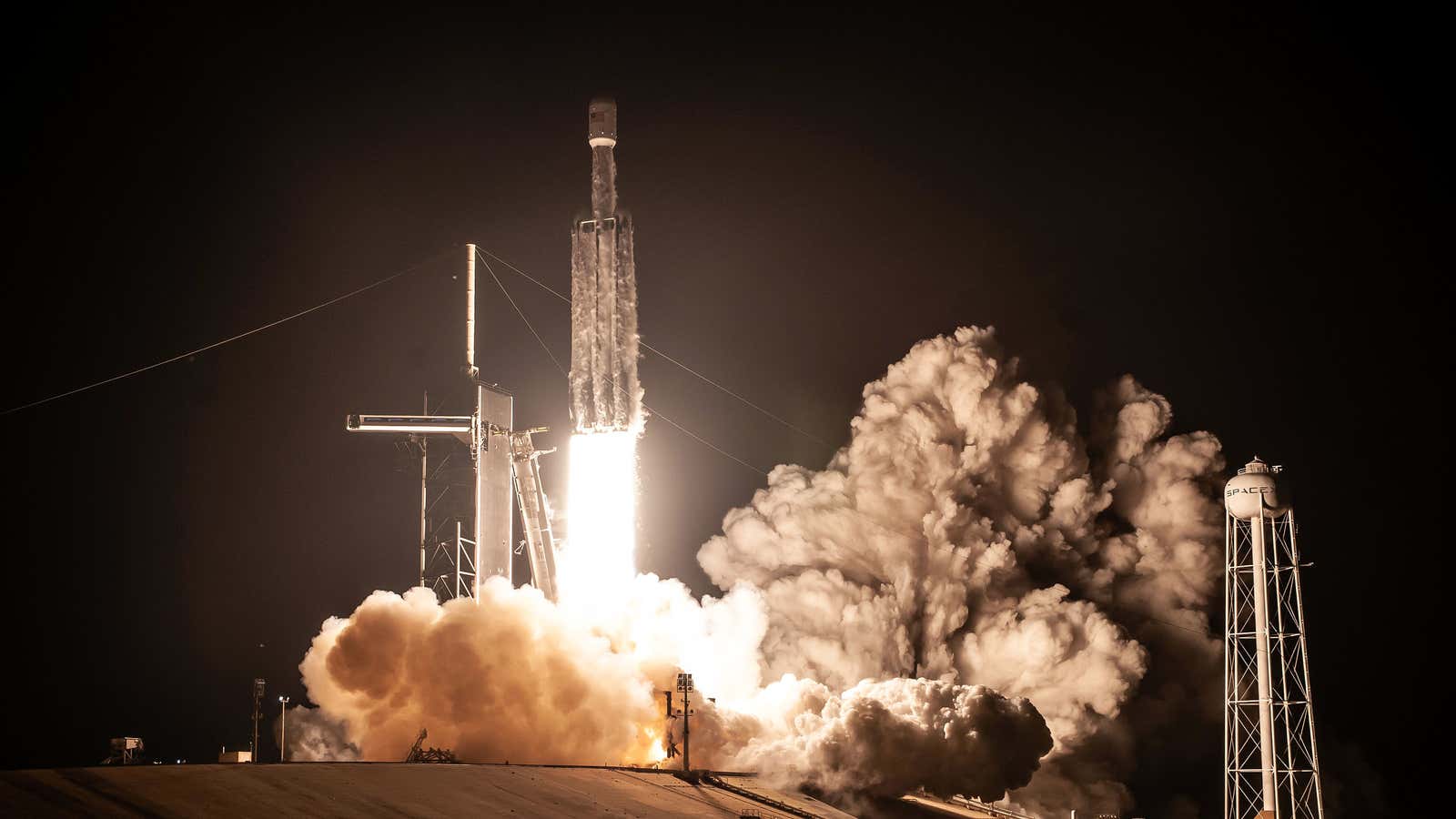The rocket billionaire discourse, heady as it is, can distract from the facts. Here’s one: NASA saved at least $548 million, and perhaps more, thanks to just one contract with Elon Musk’s SpaceX.
Last week, the US space agency tapped the company’s Falcon Heavy rocket to launch a space probe to one of Jupiter’s moons, Europa, in 2024. The much-awaited Europa Clipper mission will fly by and assess the evidence of water—and extra-terrestrial life—on the astronomical body. The mission was driven through Congress thanks in large part to the support of one former representative, John Culberson, a Texas Republican who navigated it through the sea of veto points and competing priorities that often stands between scientific hopes and their realization.
One way the mission avoided political pitfalls was a linkage with Boeing’s Space Launch System (SLS) rocket, a huge space vehicle designed to return humans to the moon or Mars. The rocket had just one problem: It was hastily assembled from the remains of a canceled NASA program, and there were no concrete plans for it. A decade ago, the folks behind each project joined forces to justify one another’s work. “Once built, SLS would be a rocket with nowhere to fly,” David W. Brown writes in The Mission, his account of the project. “Europa was a somewhere.”
The delayed SLS has yet to fly. Its first mission is expected around the end of this year. But since the SLS became central to the Trump administration’s Artemis program to return to the moon, NASA auditors have pointed out, in addition to the massive cost, that there would not be enough SLS rockets for both the moon and Europa missions.
In 2019, NASA’s inspector general sounded out the possibilities (pdf), and wasn’t bullish on any of them, particularly on price: Even accounting for the fact that the SLS could get the probe to Jupiter faster (saving money spent on the program back home), the system would cost about $726 million. Two other rockets available for purchase, the United Launch Alliance’s Delta IV and the Falcon Heavy, were forecast to cost $450 million each.
The Europa Clipper wound up with a cheaper ride
The deal NASA eventually made with SpaceX for the Falcon Heavy, however, will cost just $178 million. The drop in cost is directly traceable to SpaceX’s approach to designing reusable rockets, and to the partnership NASA struck with Musk’s space firm in its early days.
Think about that: In just two years, the price of launching a space probe fell by 75%; it’s less than the cost of the rocket that launched the latest Mars rover last year. This will enable NASA to direct more resources to other science programs (as well as getting the SLS off the ground).
“Having that launch capability at that price point just saves so much, particularly for the science part of NASA that just does not have the mega-budgets that human spaceflight does,” says Casey Dreier, a space policy analyst at the Planetary Society. “To see other future missions by NASA able to leverage the lift capability of the Heavy at that price point opens up a significant amount of space access.”
The Falcon Heavy, which didn’t even exist when the Europa mission was being planned, has only flown three times. But it will launch at least five more times, including for a NASA mission to an asteroid called Psyche, before the Europa mission is expected to get underway in late 2024.
This is a transformative period for the maturing space industry, as billionaire funders and new business models increase the capacity of private actors. The egos involved may take up a lot of oxygen, but the goals of the commercial space business are not mutually exclusive with NASA’s scientific pursuits; quite the opposite, in fact: They’re enabling more science than before.
A version of this story originally appeared in Quartz’s Space Business newsletter.
